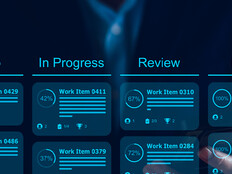Fleet Management Technology Monitor Vehicles with Telematics, GPS Tracking
For improved fleet management, agencies are turning to GPS tracking to route vehicles more effectively. And they’re leveraging telematics, a digital blueprint of vehicle operations that empowers capabilities such as real-time tracking and fuel management.
These technologies also support preventive maintenance, which helps ensure vehicles are operating without problems.
“There are a lot of vendors in this space bringing the commercial truck fleet mentality to the federal government,” says John Polowczyk, an executive director in Ernst & Young’s government practice and a retired Navy admiral.
“There are ready-made vehicle telematics platforms being used across the commercial sector that are ready-fit for federal use cases,” he says. “Commercial vendors have all built the proverbial dashboards and control towers to allow you to make management decisions about the fleet and the mission that you are attempting to accomplish.”
There are comprehensive solutions available, such as Samsara fleet tracking products, all-in-one platforms that provide real-time GPS tracking, routing and dispatching to improve operational efficiency.
And there are supporting technologies as well, including routers and antennas to ensure that vital vehicle data gets where it needs to go. Cradlepoint, for example offers the R1900 ruggedized 5G edge router, while the Havis stingray antenna and Panorama BATG are designed with telematics in mind.
But what does all this look like in action? A number of federal use cases show how government is applying these technologies.












